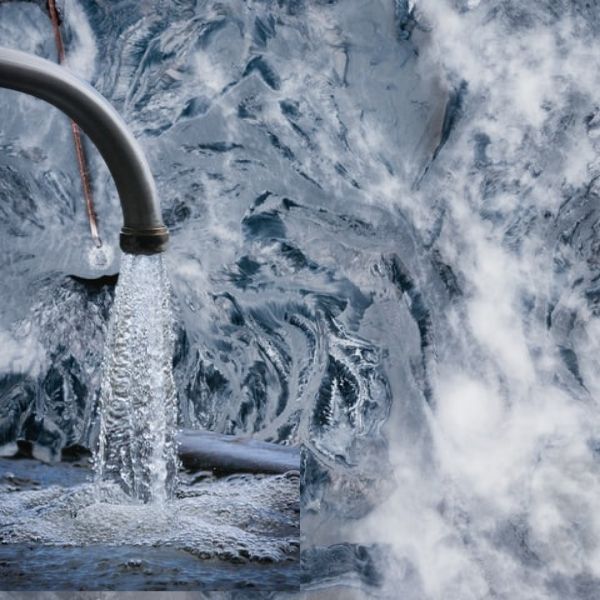3 Effective Ways of Removing PFAS and PFOA From Water
Although manufacturers are taking steps to stop using PFAS chemicals, the current levels of these polyfluoroalkyl substances are unignorable. Only in the U.S.,1500+ drinking water systems are said to be contaminated with these PFAS chemicals.
To keep your family and yourself safe from PFOA and PFOS, you should take preventive measures on your own. We have summed up some most effective ways to remove PFAS from drinking water in one place for your convenience.
Following approaches will help you lower PFAS levels in your surroundings credibly:
Ion Exchange
Ion Exchange has been regarded as one of the most effective ways to remove PFOA from drinking water.
In this chemical process, ion exchange resins are used to remove the harmful PFOA and PFOS ions. This method is equally beneficial for removing the hardness of the surface water. The best part is that this anion exchange treatment is one of the most economical ways for PFAS contaminants removal.
Reverse Osmosis
The second water treatment method for PFAS removal and reducing PFAS exposure is reverse osmosis. In this water treatment system, PFOA and PFOS containing drinking water are pushed through reverse osmosis filters.
The reverse osmosis filter is equipped with a semipermeable membrane. Tiny openings in these membranes only allow clean drinking water to pass, leaving behind PFOA and PFOS.
Utilizing reverse osmosis systems is one of the most practical and credible water treatment methods. These treatment systems utilize the best treatment technologies to eliminate PFOA and PFOS from drinking water.
Whether you get water directly from the water supply or your tap water comes from the well in your house? No matter what the case is, these treatment plants work much better than most conventional chemical treatments out there.
Moreover, reverse osmosis systems are also very good at removing other contaminants like arsenic and Hexavalent Chromium.

Activated Carbon Filtration
The next method on this list for purifying your drinking water from PFOA and PFOS is activated carbon filtration. For this drinking water treatment, you will need a granular activated carbon system.
In the method under consideration, drinking water contaminated with PFOA and PFOS is passed through activated carbon filters. The water filters have several small openings around and on the top of their surface.
In addition, these water filters are equipped with high carbon content material that effectively treats toxins like PFOA and PFOS.
What are PFAS and PFOA?
PFAS are basically a group of artificially created chemicals formed as a result of a bond between carbon and fluorine. If you remember high school’s chemistry, you will be able to recall that these atoms form the strongest bonds.
Just like that, these chemicals earned the nickname of “Forever chemicals” due to their long degradation durations.
In the 1940s, when these “forever chemicals” were discovered, scientists considered these as an evolutionary discovery. Later in the early 2000s, when various researchers uncovered the adverse effects of these chemicals on human health, the government started taking action against stopping their employment.
It was already too late because of the slow degradation processes of these Polyfluoroalkyl substances. PFAS contamination has become a significant health and safety concern worldwide due to its uncontrolled exposure.
Perfluorooctanoic Acid(PFOA) and Perdluorooctane Sulfonate(PFOS) are the two most prominent types of PFAS you will encounter. PFOA and PFOS have been used in several industries for years now. As mentioned earlier, these chemicals don’t break down quickly; PFOA and PFOS are abundantly found in our environment.
It is mainly due to the use of these PFAS substances for years in different industries. These industries include food packaging, firefighting foams and kitchen sink cleaners industries.
Research showed that after 4 years, the PFOA and PFOS levels in a human body only reduced to half.

Source of PFAS and PFOA
As mentioned earlier, these harmful chemicals for human health are man-made. These chemicals became popular in the 1940s because of their repelling properties. Non-stick cookware, fire fighting foams, and other consumer products like water-resistant clothing and pesticides started featuring these chemicals.
PFAS types vary in different products. Till now, scientists have discovered more than 5000 independently tested types of PFAS. The point of entry for PFAS could be anything from groundwater, water supplies, and soil to air.
People who live near facilities utilizing these chemicals are exposed to contaminated drinking water. It is because these substances are water-soluble and enter into the water supply through the soil.
The Symptoms and Dangers of PFAS and PFOA
These chemicals can have more negative health effects on the human body than most people realize. PFAS accumulates into the body for extended durations due to its slow breaking property, posing severe health risks.
The amount of PFAS found in drinking water for a common citizen has reached a terrifying level. Although EPA is moving forward to regulate the use of PFAS under the safe drinking water act, more effort is required to get rid of the PFAS already present in the environment.
According to a report provided by the environmental protection agency, PFAS are found abundantly in drinking water, soil and air.
Scientists are researching to find the exact level to which these substances are affecting our health. Till yet, they have managed to find some health risks that can’t be ignored.
Above all, these substances weaken the immune system of the consumer. Moreover, the low birth weight of infants is also termed as a side effect of these substances. Increased cholesterol levels, kidney and liver damage and cancer are among the complications of these substances.
Does Water Filter Remove PFAS and PFOA?
The answer to this question depends upon the type of water filter and point of use. A carbon filter with a reasonable flow rate is quite effective for removing most PFAS from the water.
Another effective method that is more widely used is Reverse Osmosis. The bottled water we receive is a result of this treatment.
Which Water Filter Removes PFAS and PFOA?
Not all filters you will find on the market will be able to eliminate PFAS from the water.
Only those filters that utilize R.O., Carbon Filtration,,, or ION Exchange technologies are suitable for this purpose.
We have found the following filters to be effective in this regard:
Under Sink Water Filter
The first type of filter you can use is a conventional under-sink water filter system. We experimented, and water tested 99% pure after going through this water filter.
These filters utilize different technologies, but we recommend the R.O. filter as it is most effective.
Whole House Water Filter
Do you have a well at your home? Want an ultimate water treatment for your whole house? If yes, then the whole house water filter is the ideal option for you. This filter not only eliminates PFAS but is the worst enemy of all other kinds of contaminants.
The multi-level structure of this filter doesn’t let any harmful element pass through it.
Water Ionizer
The next filter on this list also shows exceptional results when it comes to eliminating PFAS. The water ionizer filter uses a chemical process to decrease the P.H. of the water.
Before going through the process of electrolysis, the water is pushed to pass from a carbon filter—this eliminates most of the harmful elements from the water.
FAQs on How to Remove PFAS & PFOA from Water
To facilitate you, we have answered some common questions related to PFAS removal:
Does Boiling Water Remove PFAS and PFOA?
PFAS and PFOA are two chemically bonded substances. On the flip side, boiling is a physical separation method. Hence it is not possible to remove these substances by boiling water. Boiling concentrates the composition of PFAS, making them more hazardous.
How Do I Know If My House Is Contaminated with PFAS and PFOA?
Although there are several kits available on the market, they require technical knowledge for operating them. The good news is that several laboratories test the presence of PFAS at a very affordable rate. You simply have to send a sample of your tap water and wait for the results.
Does Water Softener Remove PFAS and PFOA?
No, water softener only removes minerals like magnesium and calcium. The process involved in the water softening method is not suitable for removing PFAS and PFOA from the water.
Conclusion
PFAS, which was once considered an evolutionary discovery, is now a potential hazard for human health. These harmful substances are commonly found in air, water, and soil around you. Fortunately, there are several effective methods to get rid of such substances today.
Let us know which method did you find most effective?
